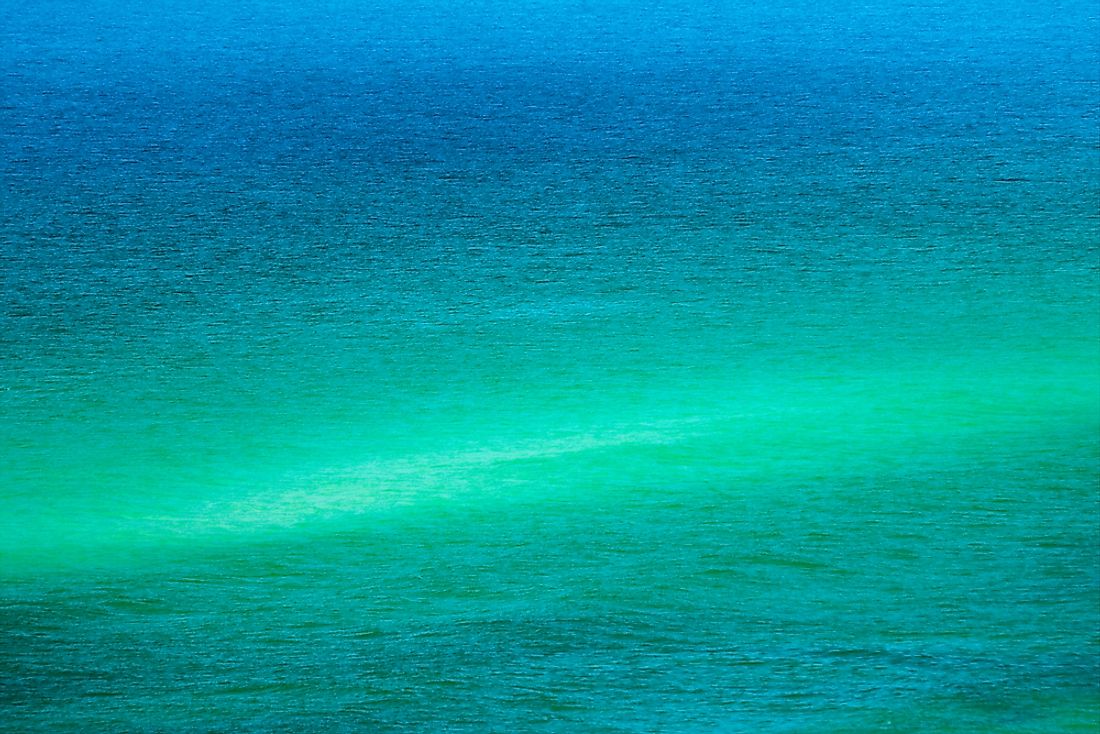What is a Shoal?

The term shoal is commonly used in earth sciences, oceanography and geomorphology to refer to a natural submerged bar, bank, or ridge which is made up of consolidated material such as sand. The material arises from the bed of an adjacent waterbody. The term is mostly used to denote a submerged bar, bank, or ridge, which rises close enough to a waterbody's surface to pose a danger to navigation. Two or more shoals that are linked via present or past hydrographic and sedimentary processes or separated by shared troughs are called a shoal complex.
Description
Shoals appear as long and narrow ridges. The landform occurs when an ocean current, stream, or river facilitates the deposition of granular material and sediment leading to localized shallowing of the water. The occasional sea rise may result in the in-place submerging of barrier islands leading to the formation of shoals as well as the submergence and erosion of inactive delta lobes. Shoals can form as fluvial landforms in lakes, rivers, and streams or as an ocean bank in the sea. A shoal-sandbar can episodically detach a smaller waterbody from the sea such as brackish water estuaries and marine lagoons.
Formation & Composition
Shoals commonly consist of sand, but they could be composed of any other granular material that the moving current meets on its way and can haul around including gravel, shingle, boulders, silt, cobble, and soil. The material's grain size and its availability are important factors in the formation of a shoal.
As surface waves approach shallow water, they slow down, and the distance between them reduces while their wave height increases. This process is termed as wave shoaling. The waves may strengthen to the mark where they break, or they may fail to break at all depending on the steepness of the beach's slope or how large they were to start with. Waves particularly shoal as they go over submerged reefs or sandbanks can be dangerous for ships and boats. Shoaling can diffract waves, so they change direction. Refraction can also happen if the waves approach a beach at an angle to the beach or if it slopes more slowly at one edge than the other.
Types of Shoals
Sandbars occur where the waves are breaking since the breaking waves make a shoreward current and a counter-current along the bottom. This process can also take place on the seaward of a trough. Sand hauled by the offshore flowing bottom current is placed at the juncture where the current arrives at the wave break. A river bar or harbor is a sedimentary present at a river mouth or the entrance of a harbor. This landform can result from the action of waves on up-current beaches or the sea floor or by the deposition of freshwater sediment. Where the bed and suspended loads of a river are big enough, or the beaches are highly mobile, deposition can create a sandbar that blocks a river mouth entirely and damming the river.
Human Habitation
People have selected some shoals as settlements since prehistoric times. In some cases, such sites enabled the people to access marine resources for exploitation. The locations are sometimes selected for their water view or amenity in the modern era although many of them are susceptible to storm damage.











